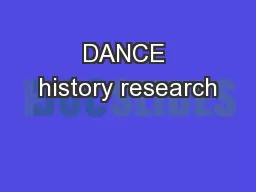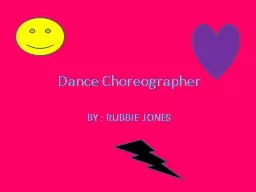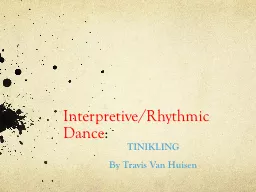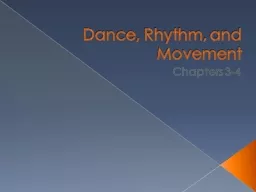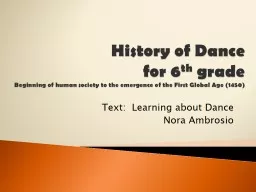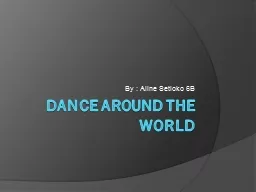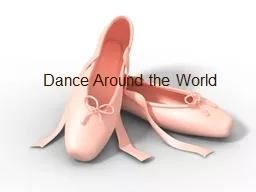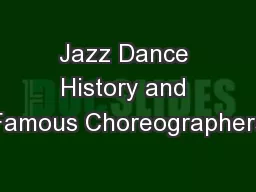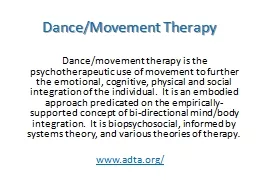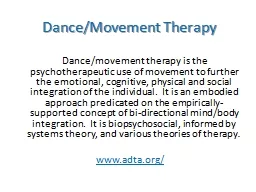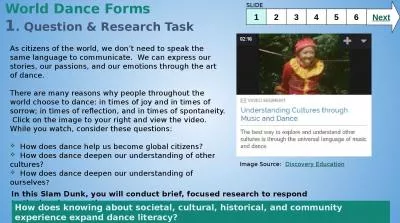PPT-DANCE history research
Author : natalia-silvester | Published Date : 2017-07-10
Sylvia Roberts srobertssfuca TOPIC SELECTION First you need a focus which could be a question an argument a position an opinion or a point of view Whatever it
Presentation Embed Code
Download Presentation
Download Presentation The PPT/PDF document "DANCE history research" is the property of its rightful owner. Permission is granted to download and print the materials on this website for personal, non-commercial use only, and to display it on your personal computer provided you do not modify the materials and that you retain all copyright notices contained in the materials. By downloading content from our website, you accept the terms of this agreement.
DANCE history research: Transcript
Sylvia Roberts srobertssfuca TOPIC SELECTION First you need a focus which could be a question an argument a position an opinion or a point of view Whatever it is this stance must be stated close to the beginning of the essay and then developed argued supported or perhaps even discredited along the way eventually leading to some form of conclusion at the . What is it?. Why is it important?. Can I give examples of it from set works?. What is Climax?. http://. www.youtube.com/watch?v=tDDeXnwa1Bs. “The most important or significant moment of the dance, which usually happens near the end”. BY : RUBBIE JONES. WHAT THEY DO. Dancers and choreographers use movements to express ideas and stories in performances. There are many types of dance, such as ballet, modern dance, tap, and . jazz.. THINKING. 1 LIVE TO DANCE 32 SPORTSWEARP Dance & Sports ear is run across three countries by t o generations of the Thomas family. e are all focused on consistently providing the highest performing foot ear a :. TINIKLING. By Travis Van Huisen. What is . Tinikling. ?. The . tinikling. dance is one of the most popular and well-known of traditional Philippine . dances.. . The . tinikling. is a pre-Spanish. Chapters 3-4. Rhythm. It is what the body feels first in music and responds to so eagerly. .. What are some examples that make your body sway, march, stomp your feet, clap etc..?. The Beat of Music. By. Cheryl Salcido. Let’s Dance!. Student. Teacher. Begin. . Begin. Begin. What is dance?. Dance. is defined as an artistic form of non-verbal communication involving movement of the body usually rhythmic and to music. . for . 6. th. grade. Beginning of human society to the emergence of the First . G. lobal Age (1450). Text: Learning about Dance. Nora . Ambrosio. Dance is recognized as one of the oldest art forms.. By : Aline Setioko 6B . Indonesia . Kecak dance . History : . created about 1930 by Wayan modulus and painter of German walter spies.Kecak dance originated from sanghyang ritual. .. Meaning : . Kecak dance is to communicate with God to say their wishes to be given kindness and . What is Dance. Dance. is an art form that generally refers to movement of the body, usually rhythmic and to music,. . used as a form of expression, social interaction or presented in a spiritual or performance setting.. The student will have a clear understanding of the development of jazz dance as an American art form.. Identify the major works of historically significant jazz dance choreographers.. Compare and contrast the works of these choreographers using proper dance vocabulary.. biopsychosocial. , informed by systems theory, and various theories of therapy. .. . . www.adta.org/. Lora Wilson Mau, MA, BC-DMT. www.92Y.org. www.antioch.edu. www.octaband.com. www.disarmingtheplayground.com. biopsychosocial. , informed by systems theory, and various theories of therapy. .. . . www.adta.org/. Lora Wilson Mau, MA, BC-DMT. www.92Y.org. www.antioch.edu. www.octaband.com. www.disarmingtheplayground.com. Warm up and cool down. Stretching . Alignment. Body awareness. Body capabilities and limitations. Causes, prevention and treatment of injury. Body maintenance. Effective warm up. 10 - 15 minutes of continuous movement that increases in difficulty, involving large muscle groups. These large muscle groups include: quadriceps, hamstrings, calf complex, muscles of lower back, shoulders, adductors, etc.. As citizens of the world, we don’t need to speak the same language to communicate. We can express our stories, our passions, and our emotions through the art of dance.. There are many reasons why people throughout the world choose to dance: in times of joy and in times of sorrow; in times of reflection, and in times of spontaneity. Click on the image to your right and view the video. While you watch, consider these questions:.
Download Document
Here is the link to download the presentation.
"DANCE history research"The content belongs to its owner. You may download and print it for personal use, without modification, and keep all copyright notices. By downloading, you agree to these terms.
Related Documents

